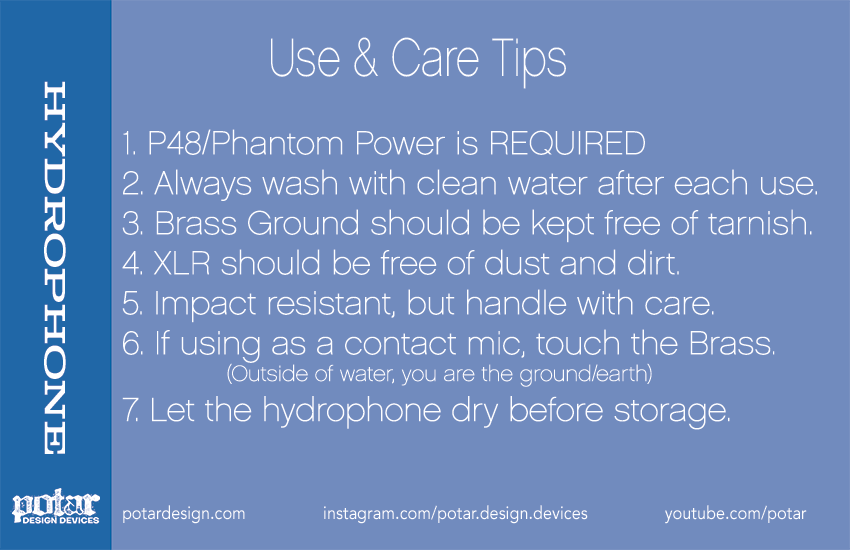Hydrophone – 40ft
$199.00 $199.00
High-quality piezo cylinder and OPA-based impedance convertor encased in polyurethane
Specs:
Cable: Canare L-2T2S – 40ft
Connector: Neutrik NC3MXX XLR
Piezo: Steminc Cylinder
Circuit: OPA Alice mini
Required Power: 48v
Built to order – 30 day turnaround time
Built based on the fantastic Instructable and OPA Alice circuit designed by Jules Ryckebusch
Out of stock
Description
Active Hydrophone, listen to underwater sounds.
This device uses a high-quality piezo cylinder and OPA-based pre-amp/impedance convertor encased in polyurethane to capture sound/vibration in both fresh and salt water. Requires 48v phantom power as supplied by most portable recorders. Sounds fantastic!
Specs:
Cable: Canare L-2T2S – 40ft
Connector: Neutrik NC3MXX XLR
Piezo: Steminc Cylinder
Circuit: OPA Alice mini (OPA1642AIDR)
Required Power: 48v
For more info: Built based on the fantastic Instructable and OPA Alice circuit designed by Jules Ryckebusch
Comes in a repurposed, hard plastic medical device case.
Build Details:
I purchased a few completed boards from PCBway, as I knew I wanted at least 2 for myself and that seemed like the most economical way to go. The circuit uses the ultra-quiet OPA1642 Operational Amplifier ICs and a near Navy spec cylinder piezo as the pickup. I opted for using Canare cable; with the hydrophone at 40-50ft in length, I think the cotton strands inside will add some extra strength for these long underwater runs. I also opted to use a 1.5″ brass cap for the water ground, center tapped to fit the cable snugly. This brass piece also helps the hydrophone stay buoyant as the polyurethane can tend to float.
Hydrophone Sound Samples
From the mouth of the San Gabriel River (between Seal Beach and Long Beach, Ca). you can hear the clicking and croaking of fish, (Croakers no doubt, both near and far) as well as cool creaky, and bubbling sounds.
Only logged in customers who have purchased this product may leave a review.












Reviews
There are no reviews yet.